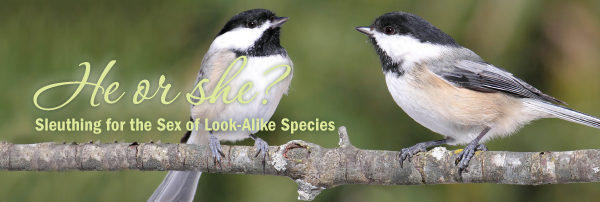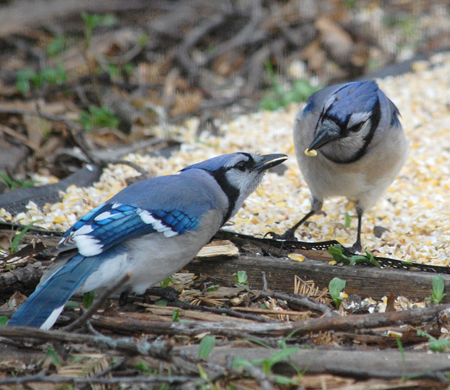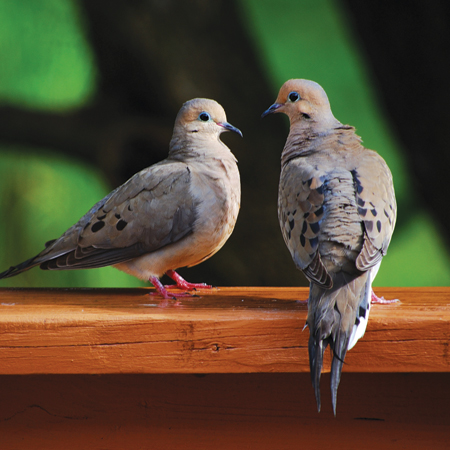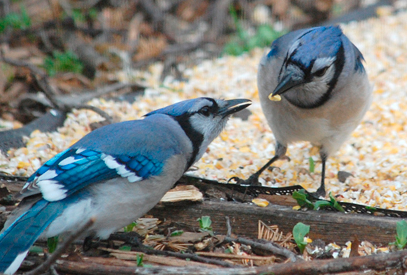
Bird species in which the male and female look the same are called monomorphic. Several of our favorite backyard bird species are monomorphic, such as Black-capped Chickadees, Blue Jays, House Wrens and Mourning Doves. Other monomorphic species in Minnesota include American Crows and Bald Eagles. Here are some clues to help you figure out who’s who of the look-alike birds in your backyard.
Size
Size variations can be helpful in deciphering the sex of monomorphic species. For some species, as in the Bald Eagle, the female is larger than the male. The size difference may be visible in larger raptor species
but unless the songbirds are side by side the size differential between the sexes is difficult to determine.
Even though these birds don’t have obvious gender differences in their plumage it is often possible to determine males from females based on behavior.

Migration
Generally, migrating males arrive at breeding grounds before the female of the species. For example, large flocks of American Robins in early spring are likely to consist entirely of males. Female robins generally arrive weeks later.
Courtship Displays

Courtship rituals also help distinguish males from females. One very sweet example is when the males of many bird species will feed the females to solidify the pair bond.
Another example is the call and response of Black-capped Chickadees. The male chickadee gives a two to three note “fee-bee” call. The female follows closely behind the male giving a “dee” call, to which the male may respond by offering her a tidbit of food.

The male Mourning Dove performs a dramatic aerial courtship display known as “flapping-gliding flight.” First, he leaves his cooing perch while vigorously flapping and noisily clapping his wings. Next, after rising as high as 100 feet, he makes a long spiraling glide in a complete circle then does a series of flaps and glides before landing on a perch.
Bird Song
Song can provide clues to a bird’s sex. But first, it’s important to distinguish songs from calls. Calls are simple, unmusical sounds uttered by both sexes to communicate specific messages such as warning, begging or to stay in contact with others of the flock. Songs, however, are complex groups of notes, typically performed by males during breeding season to announce a territory and advertise availability to females. (A notable exception is the female cardinal, one of few female songbirds that sings.)
Nesting Behavior
Nest-building habits provide great clues for identifying the male of a species. For example, the male House Wren builds the start of several nests at once. He places sticks in several houses, while singing prolific songs. The female inspects all of the possible nest sites and makes the final choice of where to complete the nest.
Both sexes of Blue Jays participate in nest building, but a division of labor is evident during incubation—the female Blue Jay incubates the eggs and the male brings her food.
Early in the breeding season, male and female American Crows tend to stay very close to one another. The male follows the female’s every move, flying after her and alighting next to her on a branch. Later, the female incubates the eggs and the male feeds her.
With some patience and observation you can identify guys and gals of monomorphic birds in your backyard. Give it a try!
Adapted from the March/April 2014 edition of our Bird’s-Eye Newsletter
by Minnetonka Manager CAROL CHENAULT


